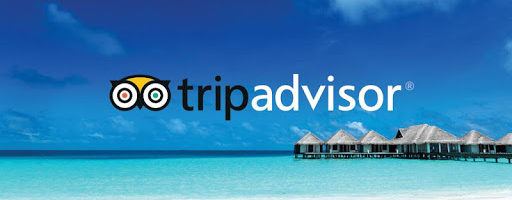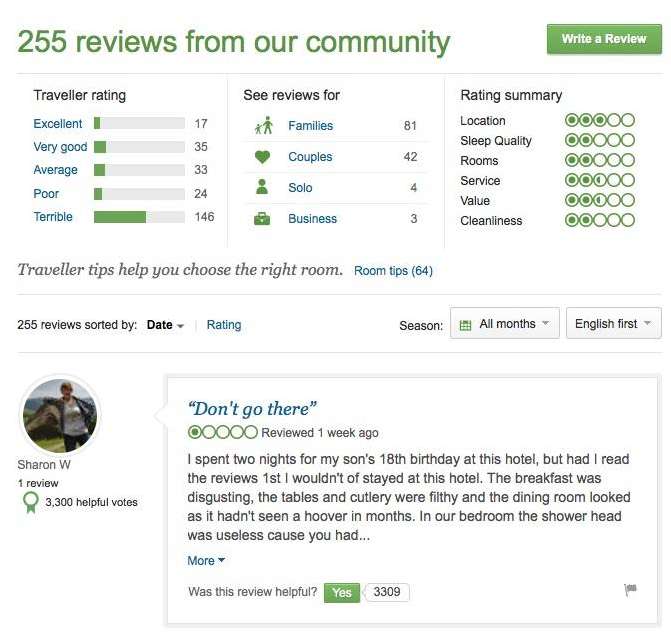TripAdvisor – changing travel one review at a time.

How TripAdvisor turned the travel world upside down by using a digital platform to let travellers review all aspect of their trip.
TripAdvisor – changing travel one review at a time.
Gone are the days when you would visit tour operator’s office, look at beautiful brochures and book your flight, hotel, and local transportation to your dream destination. You would rely on their expertise to help you to book the perfect getaway at a reasonable price.
The tour operators incurred high startup costs and overheads – building brick and mortar stores for clients to visit, creating and circulating colourful brochures. They would also need to purchase capacity from hotels, flights and local transportation. For peak holiday seasons, tour operators would need to negotiate and purchase capacity six months in advance, which caused a time lag between the negotiation for capacity and time of sale. Once prices are negotiated through a face to face meeting between the hotelier and the tour operator, travel brochures, with photos, descriptions and estimates were printed out. These travel brochures were distributed to any customers who visited the tour operator’s office. All parties involved assumed stability across the value chain and that there were not going to be many changes in the future.
With relatively low startup costs and overheads, a plethora of online travel agencies (OTAs) grew popular – Expedia, Booking.com, Hotels.com, etc., started to sell travel to the customers directly without the travel agent. Consumers gravitated towards these platforms as they could view these web-based interfaces at the comfort of their home. These platforms also provided lower prices due to real-time intermediaries of supply and demand. These OTA’s used the “dynamic pricing” method based on actual demand for a flight or a hotel at any given time, causing many travellers to get last-minute discounts.
In 2000, TripAdvisor caused a disturbance in the traditional travel agents market. TripAdvisor did this by:
a) Providing platform for authentic traveller reviews – They realised that it was really hard to find unbiased travel-related information and you were too dependent on the slick brochures or websites for information. They decided to create a platform which allows travellers post reviews and photos about travel locations, hotels and restaurants – all aspects of your travel covered. This allowed travellers who visited a place to post positive or negative experiences for everyone to view. Travel agents no longer had the monopoly of expertise about hotels and locations. A few clicks and this information was accessible to anyone sitting at any part of the world.
b) Securing critical mass early – For a platform to be successful, securing critical mass on both sides is necessary. TripAdvisor was able to attract consumers due to its convenience and authenticity. The used the presences on consumers, to draw the hoteliers and restaurateurs to the platform.
c) Becoming profitable at an early stage – While TripAdvisor was used regularly by the consumer, they struggled initially to monetize the platform. Their first attempts to use banner ads and licensing of content to generate revenue failed miserably. They decided to offer OTAs text links to their sites on TripAdvisor. By 2002, these ads had a 10% click-through rate, making TripAdvisor profitable.
d) Efficiency in execution – There were quite a few players but their efficiency in execution and using the digital platform to scale led to the above three factors.
(Reviews shown on the TripAdvisor website)
TripAdvisor’s differentiating factor from other OTAs was that it had a platform model which did information processing, connection to partners (flights, hotels…) but did not play any role in the physical booking processes. If a traveller did not have a pleasant experience, they would not blame TripAdvisor but instead use the platform to post a review about their experience. Thus, any friction or overheads were handled by the partners and not by TripAdvisor. Visitors of the site paid nothing to use all the different functionalities of the site.
By 2010, TA was the largest travel site in the world operating in 24 countries. It had over 40 million reviews and an operating income of $196 million. In May 2010, the company had 20 million registered members. [1]
Traditional players did not realise the power of the scale, speed and scope factors of the digital market. They tried to create a blended model of having a digital presence as well as physical brick presence. The physical store soon became a liability.
By 2017, TripAdvisor was responsible for $US 546 billion (10.3%) of global tourism spend($US 5.29 trillion) and this influence continues to grow at a 7.4% annual average rate in the last 10 years. [2] If they want to continue to grow at this rate they need to –
- Maintain a robust reviewing platform – continuously improving fraud detection of reviews.
- Remain relevant to both sides – Consumers and Suppliers
- Keep Innovating
At this stage, looks like TripAdvisor will continue to maintain its leadership position. They should not take their eyes of their key differentiating factors and the power of the digital innovation, as it can cause them to fall just like Thomas Cook.
References:
[1] “TripAdvisor”; https://hbsp.harvard.edu/product/511004-PDF-ENG
[2] “Sizing Worldwide Tourism & TripAdvisor’s Economic Impact”; https://www.tripadvisor.com/TripAdvisorInsights/wp-content/uploads/2018/09/Worldwide-Tourism-Economics-2017-compressed.pdf
[3] “The Secrets to TripAdvisor’s Impressive Scale”; https://hbr.org/2012/10/the-secrets-to-tripadvisors-im
[4] “How TripAdvisor Changed Travel”; https://www.theguardian.com/news/2018/aug/17/how-tripadvisor-changed-travel




Great post, Riddhi! TripAdvisor is a savior, and I almost cannot imagine traveling without the friendly tips and reviews on TripAdvisor.
In my opinion, TripAdvisor has to strike a very careful balance between reducing barriers to entry for new users and businesses, and increasing barriers to prevent proliferation of fake profiles which can obliterate brand equity and trust. How do they identify the point of equilibrium? Also, presumably, they would want to err on the side of higher barriers to entry, because the brand equity they have built over several years is more important than a marginal increase in user volume.
Another question this write-up leads me to ponder over is the standardization of ratings across geographies. How can TripAdvisor ensure that a 4-star rating means the same in Bali, Indonesia as in Thule, Greenland, so that customers find the ratings reliable and consistent?
You are making very good points Riddhi! The way you described how travel agencies used to operate in the first part of your post is also revealing of how face to face interaction and mainstream destinations were substantial to create a safe and trustworthy, network of relationships across geographic distance since agencies couldn’t send their customers to completely virgin destinations. With that in mind, we can assume that the other huge disruption brought by Tripadvisor was to unlock new doors to remote destinations by taking away the fear of the unknown but still providing tourists with more authentic and less mainstream options. What are the risks though? Is there a scenario where TripAdvisor would bring new streams of unwanted tourists in places with fragile culture and threaten their preservation?